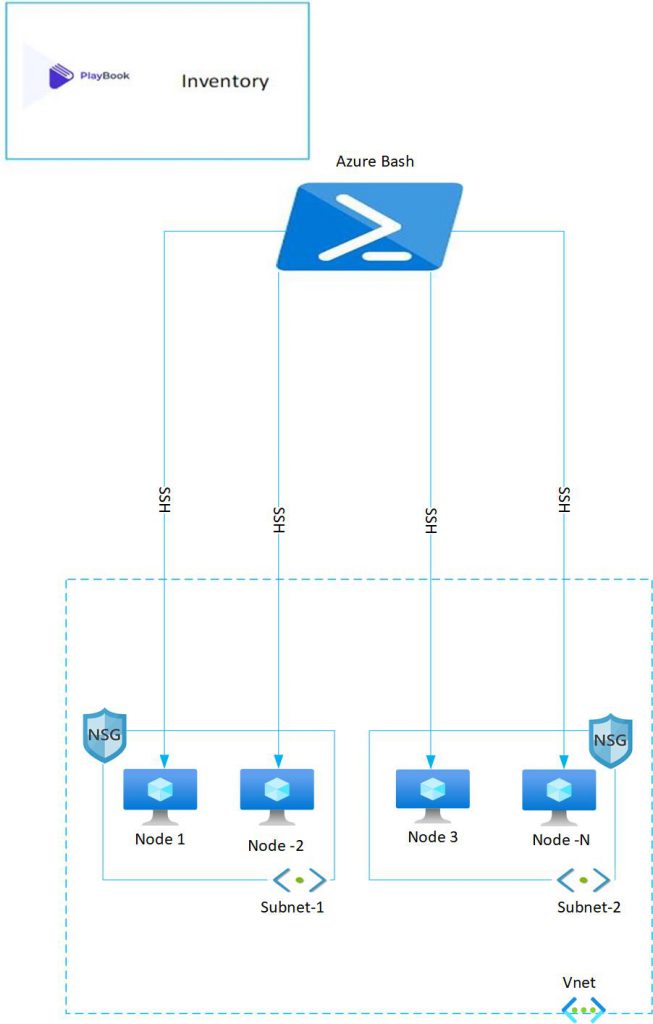The sheer complexity of modern IT environments make automation a necessity, Ansible is an automation tool. It makes your business more efficient and saves time. Azure ansible environment where configure your system, compatibility and deploy software and orchestrate more advanced IT tasks such as continuous deployments and reduce human efforts, zero downtime rolling updates using azure Bash. You can use tags to organize your azure resources and deploy software using tags in dynamic inventories ansible.
What are the Benefits of a Azure Dynamic Inventory Ansible over a Static Inventory?
- No need to configure machines deployment is done using azure Bash
- Dynamic inventories do a perfect job of reducing human error as information is gathered using scripts.
- Minimal effort is required in managing inventories.
- Agentless- You don’t need to install any other software or firewall ports on the client systems you want to automate. You also don’t have to set up a separate management structure in azure.
- It reduces manual activities in detecting errors & corrections.
Why we need Ansible as Dynamic Inventories?
Anyone who works as an operations engineer has witnessed a bunch of issues with manual configuration approach and more repetitive tasks which are time-consuming. Sometimes, key engineer leave the company and new engineer struggle to understand the environment and start performing the tasks without escalation? Server configuration is a very broad landscape which needs to be maintained properly from the beginning. Organization Standard will be documented but people will forget/miss to follow due to resource crunch, laziness and skill gap. Scripting is one of the option to automate and maintain the configuration but it’s not an easy task.
Azure Dynamic inventory Ansible Architecture
Now let’s talk a bit about the pieces that make up the Ansible environment
Modules
Modules are like small programs that Ansible pushes out from a control machine to all the nodes or remote hosts. The modules are executed using playbooks (see below), and they control things such as services, packages, and files. Ansible executes all the modules for installing updates or whatever the required task is, and then removes them when finished.
Plugins
As you probably already know from many other tools and platforms, plugins are extra pieces of code that augment functionality. azure dynamic inventory Ansible comes with a number of its plugins, but you can write your own as well.
This tool is aimed to help azure system administrators who are seeking to minimize recurring tasks, seamless deployment, and easy automation.
“If you want to find out more about other Microsoft products, Let’s CONNECT!.”











